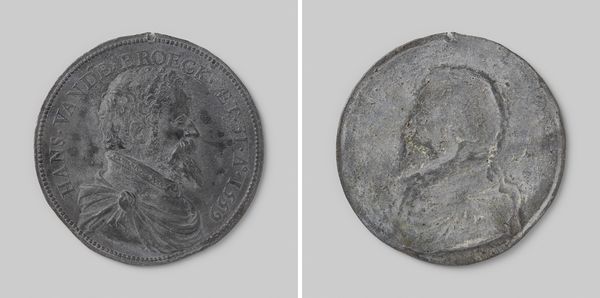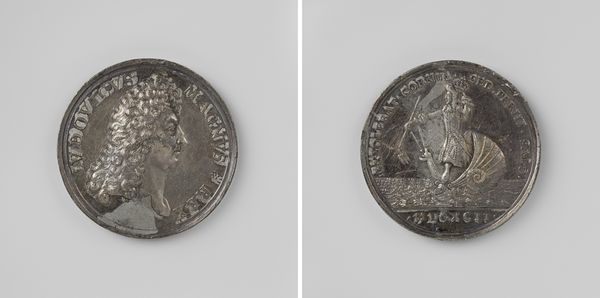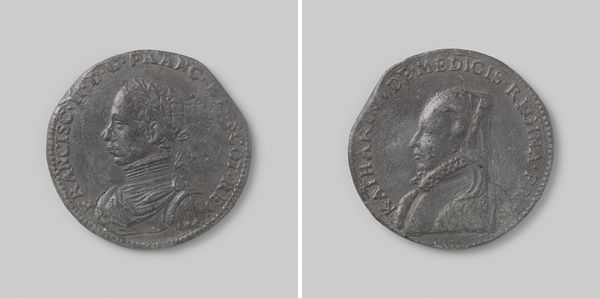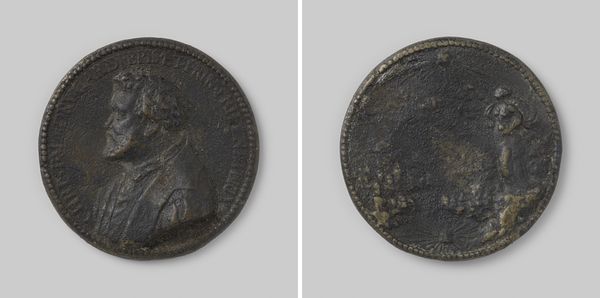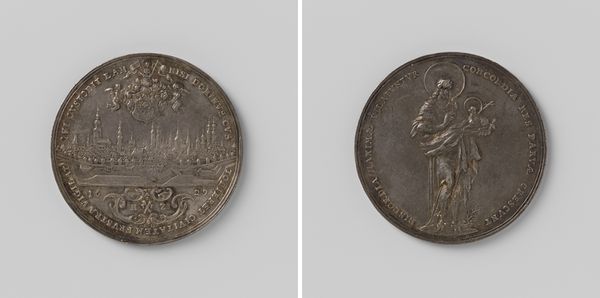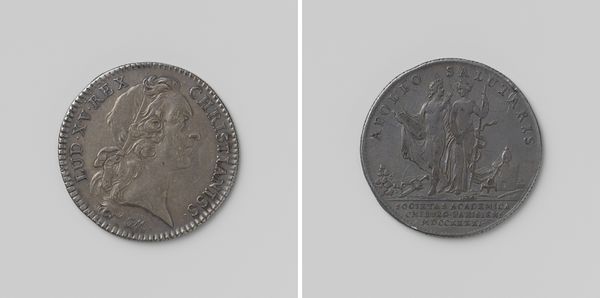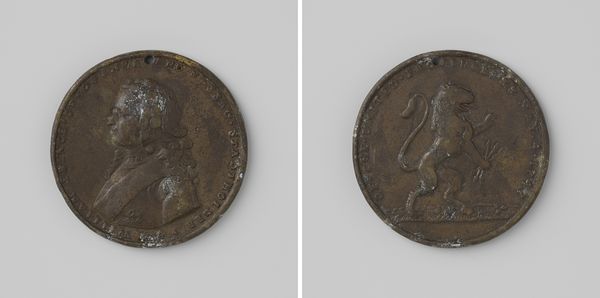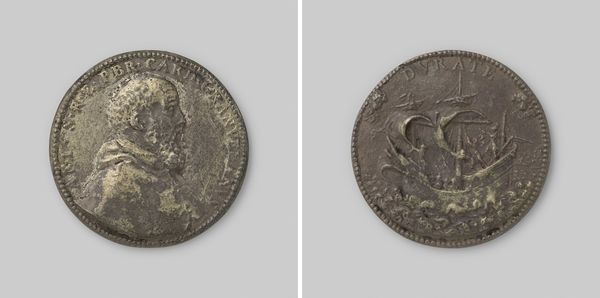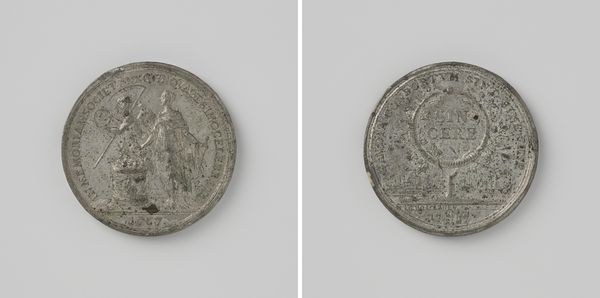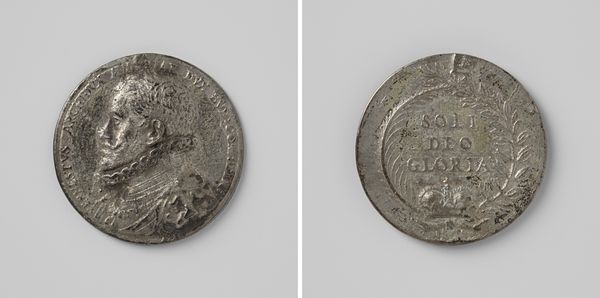
metal, sculpture
#
portrait
#
metal
#
sculpture
#
11_renaissance
#
sculpture
Dimensions: diameter 6.8 cm, weight 511 gr
Copyright: Rijks Museum: Open Domain
Curator: At first glance, this portrait exudes a sense of understated nobility. It's remarkable how such a limited palette can convey such depth of character. Editor: We're looking at a metal sculpture from 1559, depicting "Margaretha van Calslagen, wife of Joachim Polites," crafted by Jacques Jonghelinck. The material itself, likely lead or pewter, contributes significantly to its somber tone. Let's discuss its place within the cultural moment of Renaissance portraiture. Curator: Absolutely. Notice how the rigid medium emphasizes the social standing of the sitter, Margaretha van Calslagen, through meticulous detail in her attire and headdress. Jonghelinck’s use of metal highlights the period's evolving relationship between art and its aristocratic patronage. The front and back of the metal piece showcase that this was meant to last centuries as it represents wealth. Editor: It's interesting to think about these objects in terms of consumption, though. A work like this begs the question: how did the rising merchant class begin to view artworks like this? Were these pieces, crafted from relatively base metals, signaling new forms of power that relied on financial capital? It stands in stark contrast to royal or religious portraits made from precious stones and precious metals during previous artistic moments. Curator: Precisely. The relative accessibility of materials allowed for wider circulation of portraiture amongst a burgeoning merchant class. And it becomes essential to consider how the artwork acted as a material record for cementing these growing connections. Editor: It speaks to the growing complexity of art's purpose, then, functioning not just as an aesthetic object, but also as a signifier of social mobility within a changing economy. So even an understated sculpture like this encapsulates monumental shifts in how Renaissance society used images to articulate identity and position within a developing social landscape. Curator: Right, analyzing material choices offers vital insight. Editor: A fascinating example of art history speaking through the language of materiality.
Comments
No comments
Be the first to comment and join the conversation on the ultimate creative platform.
